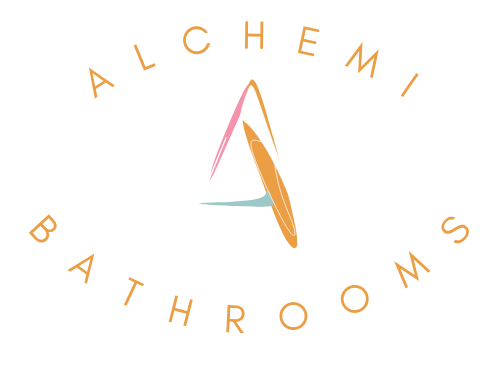The Mold Menace: A Bathroom Battle
Ah, the humble bathroom – the sanctuary of cleanliness, the oasis of relaxation. But alas, even this bastion of hygiene can fall prey to a most insidious foe: mold and mildew. These microscopic marauders, thriving in damp, humid environments, can wreak havoc on our porcelain paradise, leaving behind a trail of discoloration, musty odors, and potential health hazards.
As a self-proclaimed bathroom enthusiast, I’ve had my fair share of encounters with these fungal foes. From the time I moved into a new apartment, only to find the telltale signs of mold creeping up the walls, to the ongoing battle with mildew in my own personal sanctuary, I’ve learned a thing or two about keeping these unwelcome guests at bay. And now, dear reader, I’m here to share my hard-earned wisdom with you.
The Science Behind the Scourge
Mold and mildew are a common sight in bathrooms, and for good reason. These fungi thrive in damp, humid environments, feasting on the moisture that lingers long after our steamy showers have come to an end. [1] The science behind their proliferation is quite straightforward: mold spores, those tiny airborne particles, find their way into our homes, seeking out suitable breeding grounds.
Once these spores land on a wet or damp surface, they begin to grow and multiply, forming those unsightly patches of discoloration that can spread like wildfire. [2] And the health implications of these fungal freeloaders are no laughing matter. Exposure to mold can cause a range of respiratory issues, from sneezing and runny noses to more severe reactions like asthma attacks. [3]
Bathroom Ventilation: The Key to Mold Mitigation
So, how do we wage war against this mold menace and keep our bathrooms mold-free? The answer lies in one simple, yet often overlooked, solution: proper bathroom ventilation.
You see, the key to preventing mold growth is controlling the moisture levels in your bathroom. And the best way to do that is by ensuring adequate airflow and circulation. [4] When you turn on that trusty bathroom fan (or open a window, if you’re so inclined), you’re not just whisking away the steam from your relaxing shower – you’re also flushing out the moist air that would otherwise linger, providing the perfect breeding ground for those pesky fungi.
Putting Ventilation into Practice
But don’t just take my word for it. Let’s dive into the nitty-gritty of making your bathroom mold-resistant through the power of ventilation:
-
Fan Finesse: Invest in a high-quality bathroom exhaust fan, one that can effectively remove moisture-laden air from your space. [4] Ensure it’s properly sized for the square footage of your bathroom and that it’s vented to the outside, not just into your attic or crawlspace.
-
Timed Perfection: Set your fan to run for at least 30 minutes after each shower or bath. [5] This ensures that all the excess humidity has been cleared out, leaving your bathroom dry and inhospitable to mold.
-
Window Wonder: If you’re blessed with a bathroom window, make it a habit to open it during and after your shower. [2] The fresh air circulation can work wonders in keeping mold at bay.
-
Insulation Inspiration: Proper insulation in your bathroom walls can also help regulate temperature and humidity, making it less conducive to mold growth. [5] Consider hiring a professional to install mold-resistant insulation.
Winning the War on Bathroom Mold
Of course, prevention is only half the battle. If you’ve already fallen victim to the mold menace, fear not! There are steps you can take to reclaim your bathroom’s cleanliness.
First and foremost, address any underlying moisture issues. Fix leaky pipes, repair cracks in the grout, and ensure your bathroom is properly sealed against water intrusion. [6] Once you’ve eliminated the source of the problem, it’s time to tackle the mold itself.
Resist the temptation to reach for harsh chemicals or bleach – these can actually do more harm than good. [7] Instead, opt for a gentle, mold-killing cleaner or a DIY solution of vinegar and baking soda. Scrub away the offending patches, being sure to wear protective gear like gloves and a mask to avoid inhaling those pesky spores.
And remember, even after the mold is gone, it’s crucial to maintain a vigilant eye. Mold can be a persistent foe, and regular cleaning and monitoring will be your best defense against its return. [8]
So, there you have it, my fellow bathroom enthusiasts. With the power of proper ventilation and a little elbow grease, you can bid farewell to the mold menace and reclaim your porcelain paradise. Happy cleaning, and may your bathrooms forever remain mold-free!
References
[1] U.S. Environmental Protection Agency. (n.d.). A Brief Guide to Mold, Moisture, and Your Home. Retrieved from https://www.epa.gov/mold/brief-guide-mold-moisture-and-your-home
[2] Reddit. (2022). YSK: Mold in the bathroom can be prevented. Retrieved from https://www.reddit.com/r/YouShouldKnow/comments/11mo2o6/ysk_mold_in_the_bathroom_can_be_prevented/
[3] Centers for Disease Control and Prevention. (n.d.). Mold: Basic Facts. Retrieved from https://www.cdc.gov/mold/faqs.htm
[4] The Home Depot. (n.d.). Bathroom Exhaust Fan Buying Guide. Retrieved from https://www.homedepot.com/c/ab/bathroom-exhaust-fan-buying-guide/9ba683603be9fa5395fab90ab995103
[5] Forbes. (2022). 10 Ways To Prevent Mold In Your Bathroom. Retrieved from https://www.forbes.com/home-improvement/bathroom/ways-to-prevent-mold-in-bathrooms/
[6] The Washington Post. (2020). Mistakes to avoid when installing a bathroom exhaust fan. Retrieved from https://www.washingtonpost.com/business/2020/09/15/mistakes-avoid-when-installing-bathroom-exhaust-fan/
[7] Florida Department of Health. (n.d.). Mold Can Make You Sick After Floods. Retrieved from https://www.floridahealth.gov/environmental-health/mold/index.html
[8] Marshall University. (n.d.). Mold and Mildew Prevention. Retrieved from https://www.marshall.edu/housing/mold-and-mildew-prevention/
